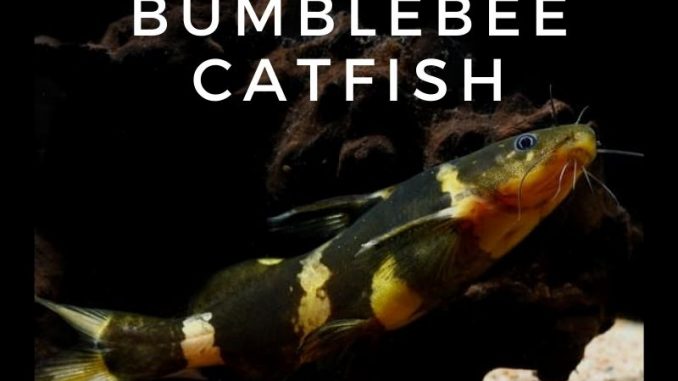
Catfish are a popular choice for community aquariums. They add activity to the lower regions of a tank and help to keep these areas clean.
Bumblebee catfish are a colorful option that stands out against the rest.
They are a hardy species that can tolerate a range of conditions. Being easy to care for, even beginners can enjoy keeping some.
This shy species fits very well into a community aquarium; they are happy in the company of lots of other species.
This article is complete with all the information you need when caring for bumblebee catfish. We’ll cover all your questions, like compatibility, their ideal tank, and how to breed them.
TABLE OF CONTENTS
Bumblebee Catfish Facts & Overview
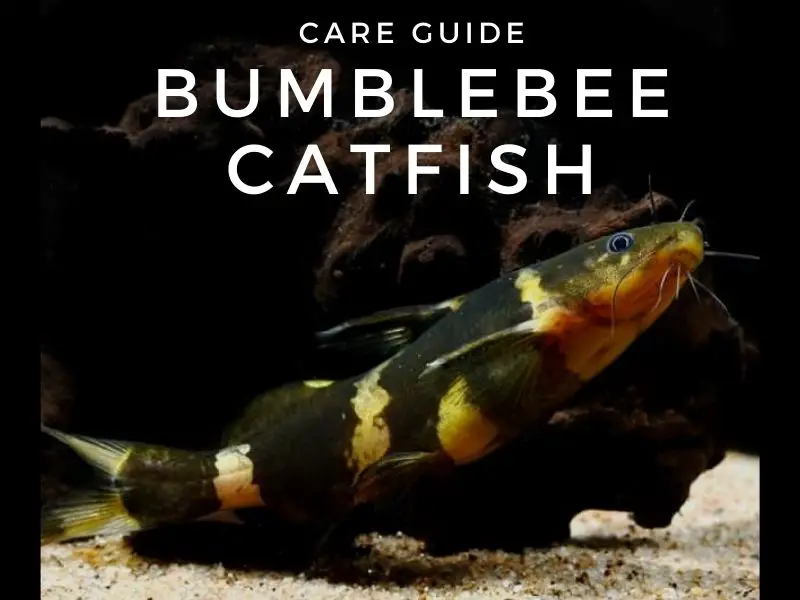
| Category | Rating |
| Care Level: | Easy |
| Temperament: | Peaceful |
| Color Form: | Black and yellow bands |
| Lifespan: | 4-5 years |
| Size: | Up to 3 inches |
| Diet: | Omnivore |
| Family: | Pseudopimelodidae |
| Minimum Tank Size: | 20 gallons |
| Tank Set-Up: | Freshwater with caves |
| Compatibility: | Peaceful, similarly-sized fish |
There’s a broad array of catfish in the aquarium industry. One popular type is bumblebee catfish.
There are more than one species of bumblebee catfish. The name often refers to all members of the Pseudopimelodidae family, which includes about 40 species.
The information in this article specifically refers to Microglanis iheringi, perhaps the most commonly kept Bumblebee Catfish in home aquaria.
This species is often known as the South American Bumblebee Catfish since it originates from the continent.
It is primarily found in the freshwater rivers and streams of Colombia and Venezuela, but populations can be found spreading to other neighboring countries, like Peru and Brazil.
Not all pet stores will sell bumblebee catfish, but its popularity means that you should be able to find a stock near to you without difficulty.
Each catfish will cost in the region of $5-$10. This can vary based on where you are and the size of the fish.
Always examine the stock that a pet store is selling. Look out for signs of disease, if you find any, don’t purchase anything and go elsewhere.
A common disease is Ich, which presents as white spots on the body.
Most individuals live to be 4 years old, but this lifespan can stretch beyond 5 years if a healthy environment and diet have been provided throughout their lives.
South American bumblebee catfish can be mixed up with Asian bumblebee catfish. We will outline how to identify South American fish later.
Typical Behavior
The first thing to note is that this species is nocturnal. Most of their behaviors are on display at night once the lights have gone off, so don’t be surprised if they’re not out much during the day.
They occupy the middle and lower regions of the tank. Swimming in open water is rare and mainly happens when they’re trying to find food.
Usually, they find caves and crevices that they can tuck themselves away in to hide.
Many aquarists don’t like nocturnal fish because they don’t get to see much activity. By placing caves in line of sight, you’ll still be able to see your Bumblebee Catfish.
These fish are relatively shy, which is one reason why they hideaway. They are generally peaceful, so they can be kept with a variety of other species.
Boisterous tank mates can stress your catfish out, making them hideaway for even more of the time, so stick to peaceful inhabitants.
Bumblebee Catfish are omnivores and would eat other fish if they were small enough. Keep them species that are the same size or bigger.
Appearance
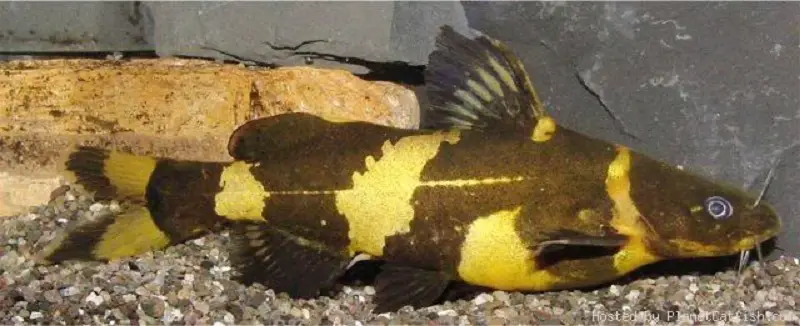
This is a very attractive fish, boasting colors and patterns along a distinct body. This makes it worth the wait for them to come out of their hiding spots.
You should have a good idea about what this species looks like just from reading its name.
They have thick black and yellow bands that alternate from their head down to their tail, similar to a bumblebee.
The fins are another attractive feature. They are quite large and showcase another black striped design.
The dorsal fine stands up with well-developed spines. The caudal fin follows behind the rest of the fish with a forked shape.
Once fully mature, an adult fish will be 3-4 inches long, so they don’t take up much space at the bottom of the tank.
The outer layer of the body is skin rather than scales. This is a common trait of most catfish. Skin is more vulnerable to scratching, so it’s important to use a soft substrate in your aquarium.
While the body is relatively cylindrical, it is quite flattened slightly. The mouth is wide and stretches open to allow these fish to eat large food items.
One of the most characteristic features of all catfish is their barbels, which resemble whiskers. These are long and could reach back to the pectoral fins.
The barbels are very important to a catfish; they are used for feeling their environment and tasting/smelling too. Barbels are sensitive, which is another reason to use a soft substrate.
Sexing Bumblebee Catfish is difficult and unreliable. Females tend to look plumper when viewed from above, but the difference is slight and it can be subjective.
Habitat and Tank Conditions
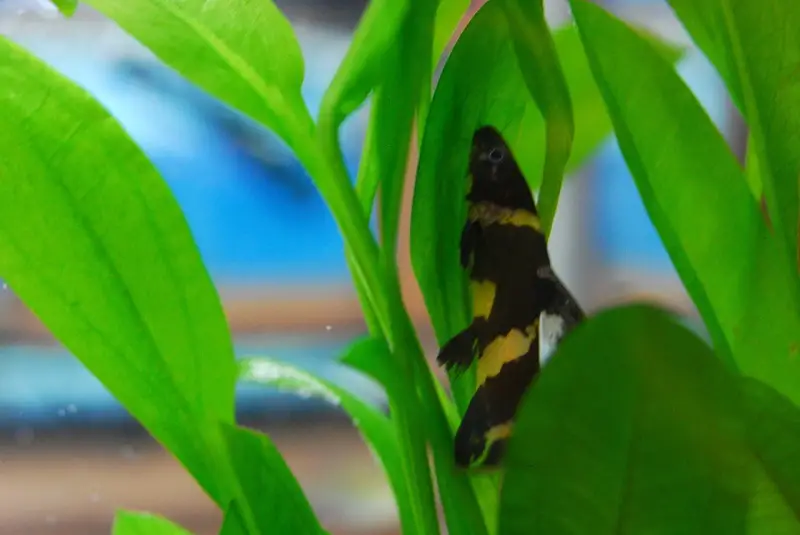
The South American Bumblebee Catfish is native to South America, as you’d expect. It’s most commonly found in Colombia and Venezuela, but it has spread to surrounding countries like Peru and Brazil.
They are found in freshwater habitats like rivers and streams, particularly those with fast-flowing water. The moving water helps to keep the environment clean and oxygenated.
This bottom-dwelling fish sticks to hiding among rocks and debris sitting on a sandy substrate. There would be plenty of plant life to hide in too.
South America has a tropical climate, at least where Bumblebee Catfish live. This means the water would be warm, with a fairly neutral pH.
Bumblebee Catfish are found in these environments because they offer their preferred conditions. You must recreate these conditions at home to keep your catfish happy and maximize their lifespan.
Tank Conditions
The bottom of your aquarium should be layered with a soft sandy substrate. Bumblebee Catfish spend most of their time in this area of the tank, so it’d be easy for them to get scratched by sharp gravel, especially with their lack of scales.
Caves and crevices are essential for happy catfish, so use rocks and driftwood to create areas for hiding. Place the caves in visible areas if you want to see your fish during the day.
Plants will also be appreciated as a form of cover. Java Ferns and Amazon Swords are some good options.
The ideal temperature is between 70°F and 77°F, so use a heater to keep a consistent value in this range. The pH should be between 6.5 and 7.5, but a slightly acidic environment is preferred.
Use soft water between 8-12 dGH.
Water movement is quite important for Bumblebee Catfish. If your filter outlet isn’t very strong, try adding an air pump. This will move the water and help to oxygenate it.
Standard aquarium lighting is fine. This species will be hiding while the lights are turned on anyway.
Read Related Topic: The Complete Red Rainbow Fish Care Guide
What Size Aquarium do they need?
You don’t need a huge tank because this species is fairly small. However, when searching for food they need plenty of space to swim around.
A 20-gallon tank is suitable for adult Bumblebee Catfish but provides as much space as you can.
How Many Can be kept per gallon?
Keeping a few of these fish together will require a larger tank. Aim to have 10 gallons for each additional Bumblebee Catfish.
Tank Mates
The peaceful nature of Bumblebee Catfish makes organizing a community fish tank much easier. They are happy to live with tank mates if you’ve done your research.
Though they can mix with a wide range of other species, there are just a few things to consider.
Bumblebee Catfish are shy. They like to keep to themselves, spending a lot of the time hidden in tight spaces, even at night when they are most active.
They can be easily stressed by active and boisterous fish, so tank mates should be peaceful and calm. Stressed catfish will spend even longer hiding away and might miss out on food.
Another consideration is the diet of Bumblebee Catfish. They are omnivorous and will eat tiny fish that can fit in their mouths. Small species (1.5 inches or less in length) would be at risk.
Some good options include Tiger Barbs, Rainbow Sharks, gouramis, Emperor Tetras, Yoyo Loaches, and other catfish.
There are many more possibilities that you could pick, just make sure you research the fish you want before purchasing.
Invertebrates like shrimps and snails have become popular for community aquariums. These shouldn’t be kept with your catfish, as they’ll likely be small enough to be eaten.
Can You Keep Bumblebee Catfish Together?
Keeping just one Bumblebee Catfish per tank is advisable. Sometimes keeping them with their own kind can lead to aggression.
A small group can be housed together if you supply a large tank to give them each space. Spread caves out around the tank so they can all have their own territory to retreat to.
Diet
Bumblebee Catfish are omnivores. These are the easiest type of fish to feed because they’ll eat meaty foods as well as plant matter. There are lots of foods for you to choose from when designing the perfect diet.
One option is to use high-quality dried foods. These are sold cheaply in all pet stores and are very convenient.
However, dried foods contain a limited amount of nutrients due to the manufacturing process. They should only be used as a supplement to more nutritious foods.
Sinking pellets and algae wafers work well in a community aquarium because they are more likely to reach your catfish.
Live and frozen foods make for a more nutritious diet. You could try daphnia, bloodworms, earthworms, brine shrimp, and insects.
When feeding, Bumblebee Catfish search the substrate and other surfaces, eating whatever they find.
This could include dead plant matter that has fallen from above, but they are unlikely to eat living plant matter.
You might have success with green vegetables. When cut up into small pieces, vegetables that have sunk to the substrate can be eaten by a hungry catfish. Try zucchini, spinach, or lettuce.
Vegetables from your kitchen can be used to make homemade fish foods too.
This fish feeds at night, so it’s better to add food in the evening, rather than in the middle of the day. You can feed them small amounts up to 3 times a day.
Remove any uneaten food before it can decay and pollute the water.
Care
This is an easy fish to care for. Both beginner and experienced aquarists will be able to look after a Bumblebee Catfish.
If you’re feeling less confident, it is easier to keep just one individual rather than a group.
They are tolerant of a range of conditions, and they’re quite hardy too, so they can cope with small changes to these conditions if you accidentally make a mistake.
Sudden and dramatic changes to their habitat could lead to health problems, so you should make every effort to maintain a consistent environment.
Using a water testing kit each week will help you to do this. You will be able to quickly spot if the water parameters ever deviate from the ideal levels.
When testing the water, you can take the opportunity to check that each piece of equipment in your setup is working the way it should be.
Acting quickly is key to ensuring that problems don’t harm your fish.
To prevent problems in the first place, you must keep your aquarium clean. Perform regular partial water changes and wipe away excess algae when you see it.
Remove uneaten food too, before it can decay and release pollutants.
An unclean tank allows pathogens to thrive. Bumblebee Catfish are not prone to any specific illnesses, but they can get ill like all fish.
A common disease to be aware of is ich. This is a parasite called Ichthyophthirius multifiliis that presents as white spots across a fish’s body.
Affected fish often start ‘flashing’, which is where they scratch themselves on surfaces in the aquarium. They will likely be lethargic and refuse to eat too.
There are various treatments available to save your fish, such as medicines and chemicals. Move the affected fish into a quarantine tank for treatment, to prevent the parasite from spreading.
Related article: jewel cichlid care
Breeding
This is a very difficult species to breed in captivity. It’s a rare feat that requires conditions to be perfect, but some aquarists are determined to try anyway.
It’s hard enough making sure that you have a male and a female, they look very similar. Females are slightly plumper when looking from above, but it isn’t very clear.
A female will become even rounder when getting ready to lay eggs.
The tank should be set up as we outlined earlier. If Bumblebee Catfish aren’t in their perfect environment, they won’t want to mate.
This means maintaining their preferred water conditions and providing plenty of caves and plants. Use a water testing kit regularly to check that conditions are ideal.
A nutritious and varied diet is important for mating too. Live foods are best for getting fish ready to spawn.
Slowly raising the water temperature up to 77°F is often a good trigger for breeding.
Once a male and female have successfully spawned the female will lay her fertilized eggs in a safe space. It’s become the male’s job to look after them and fend off fish that might want to eat them.
The eggs will hatch after 3-4 days, releasing lots of tiny fries. These can be fed using brine shrimp. Liquid foods are another good option, many are specifically designed for the fish fry.
Like we’ve said, mating is unlikely to occur in a home aquarium. Most stocks sold in pet stores come from dedicated fish farms.
Are Bumblebee Catfish Suitable for Your Aquarium?
Bumblebee Catfish are undemanding and have similar preferences to many other species in the aquarium industry. Pairing this with their peaceful temperament means it’s easy to add them to a community aquarium.
There are a few types of fish you should avoid, but it’s easy to plan around this.
Some people are put off by their nocturnal behaviors and shy personality. They might not seem worth getting if you’re barely going to be able to see them.
The rarity of sighting these fish makes it even better when you finally spot them though; Bumblebee Catfish are worth waiting for.
They are an undeniably attractive fish, with their contrasting colors and distinctive design. They will help to clean a tank too, by vacuuming up organic matter from the substrate.
This species makes an excellent addition to a range of setups. The lower regions of your tank will be enriched by this humble but colorful catfish.
What kind of tank do you keep your Bumblebee Catfish in? Let us know about your setup in the comments below…

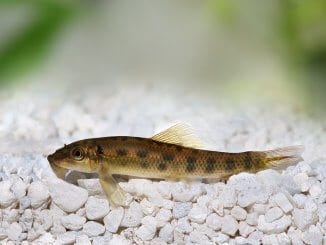
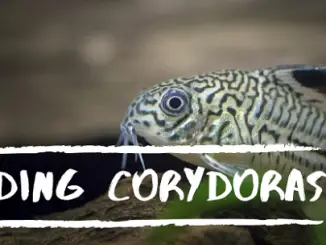
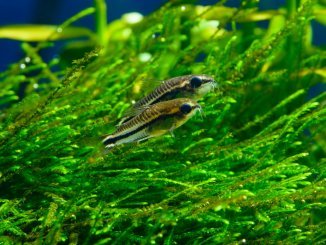
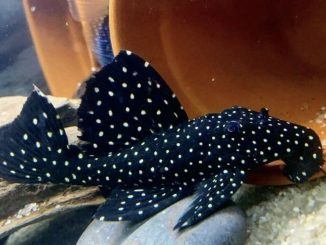
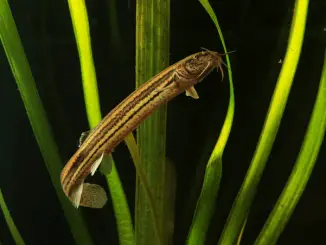
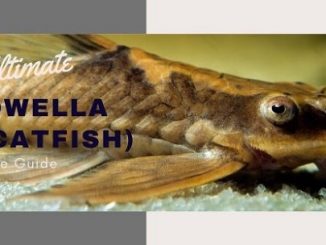
hi! this is very lovely guide :) my bumblebee is in a planted tank with a very calm betta and some neon tetras as tank mates and seems to be doing really well! thank you for the info :D
The main image used at the top of this guide is of a bumblebee goby. They are completely unrelated and have different care requirements than bumblebee catfish. Best change pic to correct species to avoid confusion.
Thank you for noticing that and bringing it to our attention. We have now updated the post to display the correct photo of the bumblebee catfish.